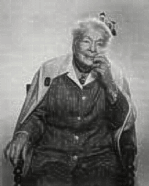Structural Integration with the Rolfing Method, a Specialized Form of Physical Therapy to Relieve Chronic Pain
Home
The Rolfing Method of “Structural Integration” is a scientifically validated system of restructuring the human body. It releases the body from life-long patterns of tension and allows gravity to naturally realign them. This therapy is highly effective for improving posture, reducing or eliminating chronic pain, and releasing long-term emotional and mental stress.
A typical treatment (called a “10 series”) consists of ten weekly, one-hour sessions, with each session focusing on a certain area of your body. Usually these are spaced out about a week or two apart. These sessions are organized into a specific sequence to most effectively realign the entire body. When the treatment is completed, you will experience a ‘new’ body that has better posture and a more relaxed relationship to gravity.


Before and after Photos
What is Rolfing®?
Certified Rolfers™ often prescribe a sequence of ten sessions to "balance and optimize both the structure (shape) and function (movement) of the entire body,” During a Rolfing Structural Integration session, a client generally lies down and is guided through specific movements. The Rolfer manipulates the fascia until it can operate in conjunction with the muscles in a "normal" fashion. This takes place over a course of ten 60 minute sessions, with a specific goal for each session, and an overall goal of cumulative results. Some clients find Rolfing painful, but Rolfing has evolved over the decades into a practice far more gentle than in its early origins. Your Rolfer will mostly likely begin your first session by asking you to take a walk around his or her studio. This protocol is simply so that your Rolfer can accurately observe your body's alignment and gait. After and in between sessions, try walking. Try running. Try cardiovascular exercise of any kind, you might be surprised how differently your body moves once it's been Rolfed.
What are the benefits?
After completing ten sessions with a Certified Rolfer™ a client can expect to experience a greater sense of allover freedom. Better posture, coordination, improved flexibility and improved movement can be expected. An enhanced understanding of how the body operates in harmony with gravity will be developed through the sessions. This new comprehension of the self can then be taken forward by the client and further experienced as a process of lifelong learning. In addition to improvements in the physical functioning of the body, Rolfing can promote an increase in one's emotional sense of well being.
Does Rolfing Last?
Yes, photographs taken of clients’ years after the Basic Ten Series show that changes are still present and structure often improved. Keep in mind however, as life changes, bodies change in response. Any injuries, accidents, lengthy illnesses and emotional stress may necessitate additional tune up or advanced work.
Is Rolfing Covered by Insurance?
It depends on the insurance policy and the circumstances. With a physician’s prescription or a Chiropractor referral, many insurance companies cover myofascial release and physical manipulation type of bodywork which Rolfing, Structural Integration bodywork includes. For your convienence I can bill your insurance for you with your Dr. referral. You are resposible for your deductable and or copays at the time of service. This is no guarantee of coverage by your insurance company or health savings account is implied or made. I encourage you to learn about your health insurance coverage.
What is the difference between Rolfing and Massage?
Rolfing is a technique that works on the connective tissue, not only the surface structures, but also deeper structures that massage does not address. The goal and results of Rolfing is to balance the over-all structure of the body. Massage does not generally produce balance and alignment in the body. Rolfing is a compliment to these disciplines.
Rolfing History?

Rolfing is named after Dr. Ida P. Rolf, who fifty years ago called her work structural integration. Dr. Rolf devoted her energy to creating a holistic system of soft tissue manipulation and movement education that organized the whole body in gravity. She discovered that she could achieve remarkable changes in posture and structure by manipulating the body's myofascial system. Rolfing is the nickname that many clients gave this work.



